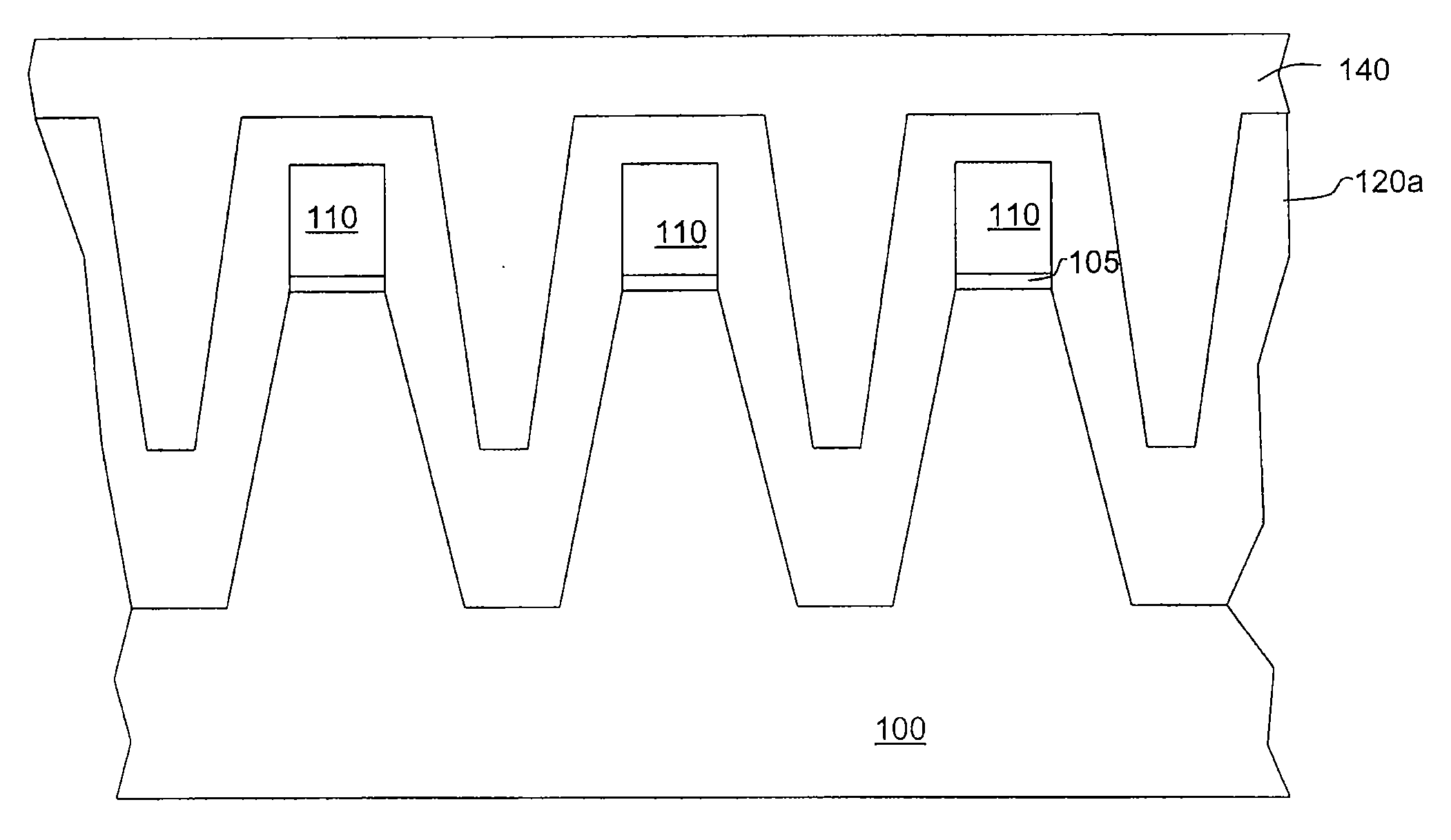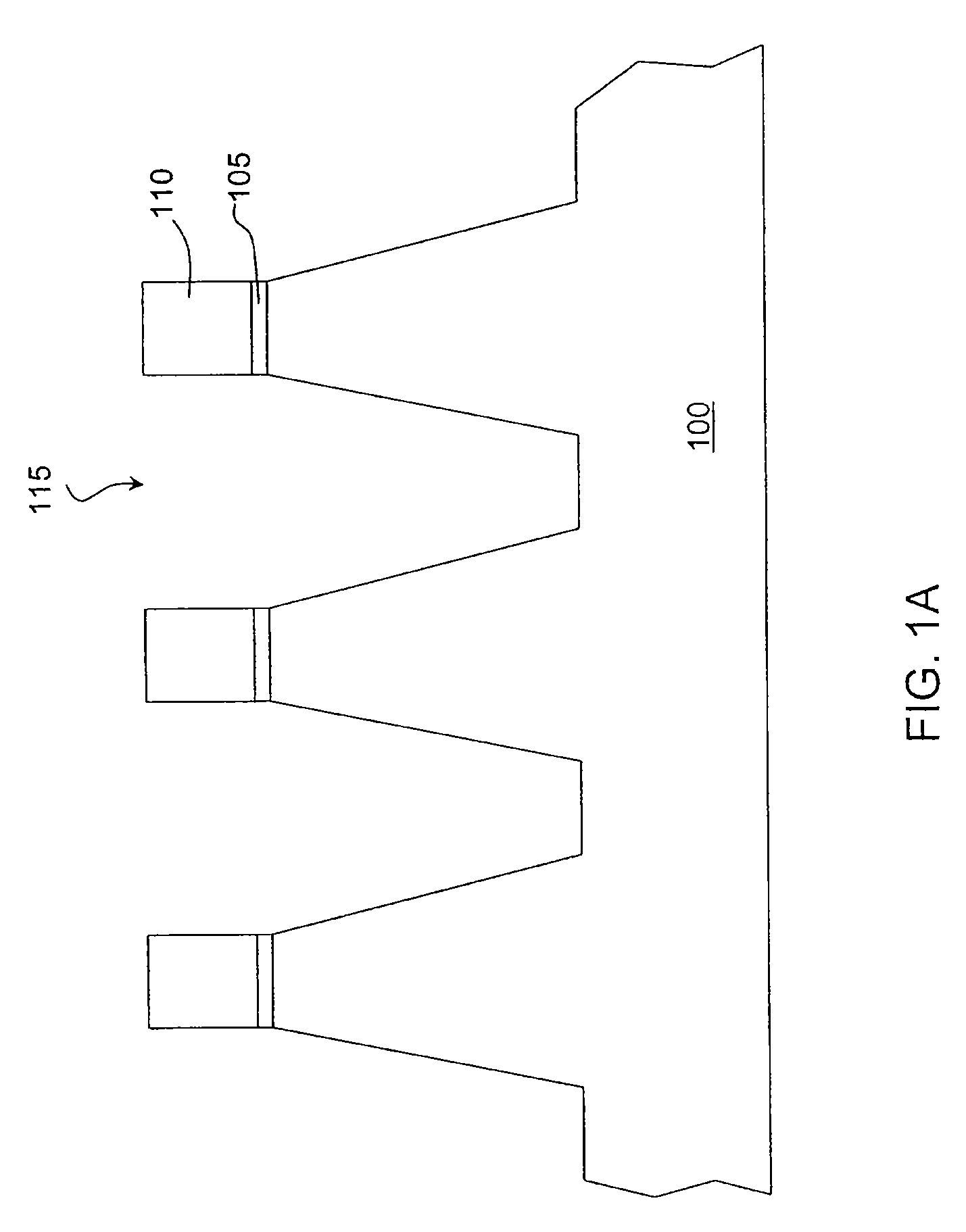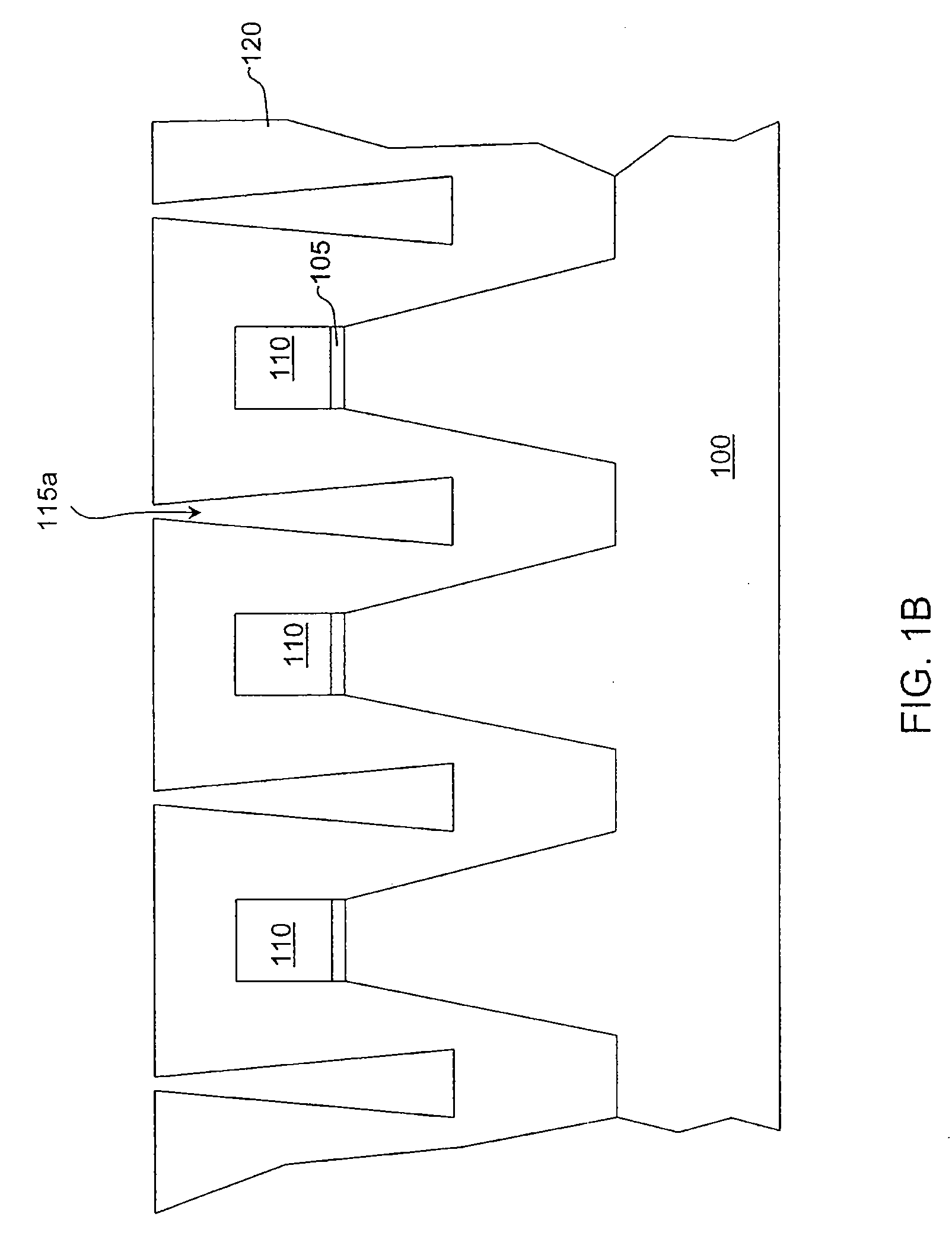Methods of thin film process
a thin film and process technology, applied in the direction of semiconductor devices, electrical apparatus, transistors, etc., can solve the problems of increasing the chances of electrical interference, difficult to fill spaces using conventional cvd methods, and the limitation of sputtering is an angular redistribution of sputtered material
- Summary
- Abstract
- Description
- Claims
- Application Information
AI Technical Summary
Benefits of technology
Problems solved by technology
Method used
Image
Examples
exemplary embodiment 1
[0045]In some embodiments, the dielectric layer 120 can be a silicon oxide layer. A first precursor can be, for example, hydrogen (H2), ammonia (NH3), hydrazine (N2H4), hydrazoic acid (HN3), other hydrogen-containing precursor and various combinations thereof A second precursor can be, for example, nitrogen trifluoride (NF3), silicon tetrafluorid (SiF4), tetrafluoromethane (CF4), fluoromethane (CH3F), difluoromethane (CH2F2), trifluoromethane (CHF3), octafluoropropane (C3F8), hexafluoroethane (C2F6), other fluorine-containing precursor or various combinations thereof. In some embodiments, the first precursor such as ammonia (NH3) and the second precursor such as nitrogen trifluoride (NF3) can be ionized as a plasma. In some embodiments, the ionization process can be performed within the chamber that deposits the dielectric layer 120. In some embodiments, the ionization process can be occurred externally and then introduced into the chamber that deposits the dielectric layer 120. In ...
exemplary embodiment 2
[0050]In some embodiments, the dielectric layer 120 can be a silicon oxide layer. A first precursor can be, for example, hydrogen (H2), ammonia (NH3), hydrazine (N2H4), hydrazoic acid (HN3), other hydrogen-containing precursor and various combinations thereof A second precursor can be, for example, hydrogen fluoride (HF), nitrogen trifluoride (NF3), silicon tetrafluorid (SiF4), tetrafluoromethane (CF4), fluoromethane (CH3F), difluoromethane (CH2F2), trifluoromethane (CHF3), octafluoropropane (C3F8), hexafluoroethane (C2F6), other fluorine-containing precursor or various combinations thereof. In some embodiments, the first precursor such as ammonia (NH3) and the second precursor such as hydrogen fluoride (HF) can be used to interact with the dielectric layer 120. In some embodiments, NH3 and HF can be introduced within the chamber that deposits the dielectric layer 120. In some embodiments, NH3 and HF can be introduced within an etch chamber different from the deposition chamber so a...
exemplary embodiment 3
[0055]In some embodiments, the dielectric layer 120 can be a silicon nitride layer. A first precursor can be, for example, hydrogen (H2), ammonia (NH3), hydrazine (N2H4), hydrazoic acid (HN3), other hydrogen-containing precursor and various combinations thereof. A second precursor can be, for example, hydrogen fluoride (HF), nitrogen trifluoride (NF3), silicon tetrafluorid (SiF4), tetrafluoromethane (CF4), fluoromethane (CH3F), difluoromethane (CH2F2), trifluoromethane (CHF3), octafluoropropane (C3F8), hexafluoroethane (C2F6), other fluorine-containing precursor or various combinations thereof. A first precursor such as hydrogen (H2) and a second precursor such as nitrogen trifluoride (NF3) can be ionized as a plasma. In some embodiments, the ionization process can be occurred within the chamber that deposits the dielectric layer 120. In some embodiments, the ionization process can be occurred externally and then introduced into the chamber that deposits the dielectric layer 120. In...
PUM
 Login to View More
Login to View More Abstract
Description
Claims
Application Information
 Login to View More
Login to View More - R&D
- Intellectual Property
- Life Sciences
- Materials
- Tech Scout
- Unparalleled Data Quality
- Higher Quality Content
- 60% Fewer Hallucinations
Browse by: Latest US Patents, China's latest patents, Technical Efficacy Thesaurus, Application Domain, Technology Topic, Popular Technical Reports.
© 2025 PatSnap. All rights reserved.Legal|Privacy policy|Modern Slavery Act Transparency Statement|Sitemap|About US| Contact US: help@patsnap.com



